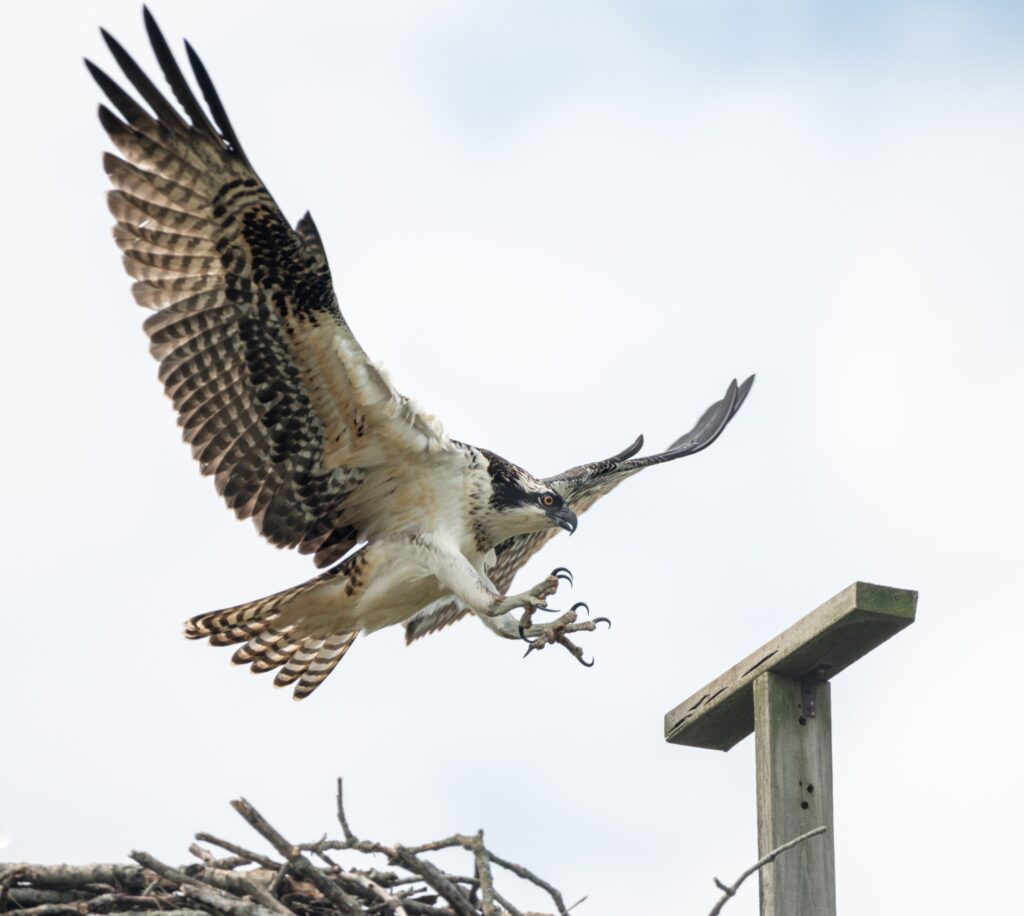Indiana’s skies are graced by a magnificent bird of prey, the osprey (Pandion haliaetus), whose presence is not only a testament to the state’s diverse wildlife but also a symbol of its environmental resilience.
With its distinctive appearance and remarkable hunting prowess, the osprey is a fascinating species that holds a special place in Indiana’s ecosystem.
The osprey is easily recognizable by its unique features. It has a white head and underparts, with dark brown wings and back, giving it a striking appearance against the sky. One of its most distinctive characteristics is its ability to dive into water to catch fish, thanks to its specially adapted talons and reversible outer toes.
Ospreys are found near bodies of water such as rivers and lakes, making Indiana’s numerous waterways an ideal habitat for these birds. They are particularly attracted to areas with abundant fish populations, which serve as their primary food source.
Ospreys are known for their hunting skills. They soar high above the water, using their keen eyesight to spot fish near the surface. When they see a fish, they hover briefly before diving feet-first into the water to grab their prey with their powerful talons. Their unique reversible outer toes and barbed pads on their feet help them grip the slippery fish securely. They are excellent anglers; the Cornell Lab of Ornithology writes the average time they spend hunting before making a catch is only 12 minutes.
These birds are also known for their impressive nests, which are often built on the tops of tall structures such as utility poles, cell towers, or specially constructed nesting platforms. Ospreys are highly adaptable and have even been known to nest on artificial structures in urban areas.
In the early 2000s, Red-tail Land Conservancy, in partnership with the Robert Cooper Audubon Society, erected an osprey nesting platform at Red-tail Nature Preserve near Selma, IN. After more than twenty years of restoration efforts on the tallgrass nature preserve, a breeding pair of ospreys began building a nest. For the last three years, these ospreys have returned to the nest. They can be spotted in a state of keen concentration near the adjacent Prairie Creek Reservoir as they dive toward the water.
In late March and early April, ospreys arrive in Indiana to build nests and breed. They may migrate up to 160,000 miles in their 15 to 20-year lifespan. Ospreys lay 2-4 eggs in a nest in April, with the first hatching about 37 days later. Not all eggs hatch at the same time. Osprey will reuse the same nest year after year, building it higher. The Cornell School of Ornithology says researchers have measured nests 10-13 feet deep and 3-6 feet in diameter!
While ospreys are not currently listed as endangered, they face challenges of habitat loss, pollution, and human disturbance. Conservation efforts, like the elimination of the pesticide DDT, have played a crucial role in protecting these birds and their habitats. Osprey have shown remarkable adaptability in the face of changing landscapes.
As we continue to strive for a more sustainable future, let us look to the osprey as a reminder of the importance of protecting our environment and the incredible wildlife that call it home. Through conservation and stewardship, we can ensure that future generations will continue to marvel at the sight of these majestic birds soaring high above Indiana’s waters.
Photo: Osprey at Red-tail Nature Preserve. Credit: Mike Mosier
Kelley V. Phillips is the Assistant Director for Red-tail Land Conservancy. She strives to cultivate wonder in nature and action to protect it.




